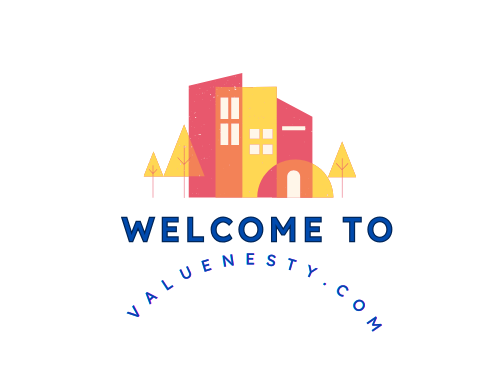introduction:
Purchasing a home is one of the most significant financial milestones of a person’s life, but for many first-time homebuyers, the journey to homeownership can be overwhelming. The traditional process of saving for a down payment, securing a mortgage, and navigating the competitive housing market can leave many feeling discouraged. For those who are not quite ready to buy but want to take steps toward homeownership, the lease to own option offers an attractive alternative.
In this ultimate guide, we will explore everything you need to know about lease to own homes, a unique arrangement that provides flexibility for renters while offering a path to eventual homeownership. Whether you’re struggling with credit, saving for a down payment, or simply seeking more time to decide, a lease-to-own home might be the perfect solution for you.
1. What Are Lease to Own Homes?
At its core, a lease to own home (also known as a rent-to-own home) is a type of real estate agreement where a tenant rents a property with the option to purchase it at a later date. This arrangement typically lasts for one to three years, during which the renter has the opportunity to buy the property at a predetermined price. The main advantage of this agreement is that the tenant gets the time they need to improve their credit, save for a down payment, and build equity in the home without the immediate pressure of a traditional mortgage.
How Lease to Own Homes Work
In a typical lease-to-own scenario, there are two key components: the lease agreement and the option to buy.
- Lease Agreement: This part of the contract outlines the rental terms, including monthly rent, the length of the lease, and any other conditions such as maintenance responsibilities.
- Option to Buy: This gives the tenant the right, but not the obligation, to buy the home at a later date. The purchase price is usually agreed upon upfront, and the tenant typically pays an option fee (a one-time, non-refundable payment) to secure this right. The option fee is often credited toward the purchase price if the tenant decides to buy the home.
2. Why Consider Lease to Own Homes?
Benefits for First-Time Homebuyers
For many first-time homebuyers, lease to own homes offer a unique opportunity to enter the housing market without the immediate pressure of securing a large down payment or meeting stringent mortgage requirements. Some of the main benefits include:
- Time to Save: Lease to own allows renters to save for a down payment over a longer period, giving them more time to improve their financial situation.
- Locked-in Purchase Price: Even if the housing market rises during the lease period, the tenant is usually guaranteed to buy the home at the agreed-upon price.
- Test the Home: Renters can live in the home for a period before committing to buying it, helping them decide if it’s truly the right fit.
Overcoming Financial Challenges
For those with less-than-perfect credit or insufficient savings for a down payment, lease to own homes provide an accessible pathway to homeownership. These arrangements may be less stringent than traditional mortgages and can be a lifeline for individuals who have struggled to secure a conventional loan.
3. How Does the Lease to Own Process Work?
The Lease Agreement
The lease agreement is similar to a standard rental contract, but it includes additional provisions about the potential purchase of the property. Some key components of the lease include:
- Monthly Rent: The tenant will pay monthly rent to the property owner. Part of this rent might go toward the purchase price of the home, known as rent credits.
- Duration: The lease period is typically 1-3 years, with an option to extend or buy out at the end of the term.
The Purchase Option
At the end of the lease period, the tenant has the option to purchase the home. If they choose not to buy, the lease ends, and they forfeit the option fee and any rent credits accumulated during the lease.
Option Fee vs. Rent Credit
- Option Fee: A non-refundable fee that the tenant pays upfront for the option to purchase the property. This fee typically ranges from 1% to 5% of the home’s value and is often credited toward the purchase price if the tenant exercises the option to buy.
- Rent Credit: Some of the monthly rent payments may be applied to the purchase price, essentially acting as savings toward the down payment.
4. Who Should Consider Lease to Own Homes?
First-Time Homebuyers with Bad Credit
If your credit is preventing you from qualifying for a mortgage, lease to own homes can be a viable solution. Since these agreements are more flexible than traditional mortgages, they offer a chance to improve credit while living in the home.
Renters Who Want to Buy in the Future
For renters who aspire to own but aren’t ready financially or emotionally to commit to a home purchase just yet, a lease-to-own agreement provides time to plan and save for the future.
Individuals Saving for a Down Payment
A common barrier to homeownership is saving for a down payment. Lease to own homes give renters the opportunity to save for a down payment over time, with part of their rent payments going toward that goal.
5. Pros and Cons of Lease to Own Homes
Advantages for Buyers
- Pathway to Homeownership: Lease to own gives renters an opportunity to buy a home when traditional homeownership might not be feasible.
- Fixed Purchase Price: Protects buyers from rising home prices during the lease term.
- Improved Credit: Renters can use the lease term to improve their credit and financial standing.
Potential Drawbacks to Consider
- Non-Refundable Fees: The option fee and rent credits are often non-refundable if the tenant decides not to purchase.
- Higher Rent: Rent payments may be higher than market rents due to the rent credits being applied toward the purchase price.
- Maintenance Costs: Tenants might be responsible for maintenance and repairs, which could add unexpected costs.
6. How to Find Lease to Own Homes
Searching for Lease to Own Properties
The internet is a great tool for finding lease to own homes. There are several websites and real estate platforms that specialize in these types of listings.
Working with Real Estate Agents
Real estate agents can also help you locate lease-to-own properties, especially if you’re struggling to find homes in your price range.
7. What to Look for in a Lease to Own Home
Property Condition and Inspection
Before signing a lease, it’s essential to have the property inspected. While some lease-to-own agreements might not require the landlord to fix issues before moving in, it’s important to know what you’re getting into.
Terms of the Lease Agreement
Review the lease terms carefully, paying close attention to the purchase price, option fee, and rent credits. Make sure that the terms are fair and that you fully understand your obligations.
8. Negotiating a Lease to Own Contract
When entering a lease to own agreement, negotiation is key. Focus on terms like rent credits, the purchase price, and the duration of the lease to ensure they are favorable.
Conclusion:
Lease to own homes offer a unique opportunity for first-time homebuyers, renters with credit challenges, or individuals seeking time to save for a down payment. However, it’s crucial to understand the terms and weigh the pros and cons before committing to such an agreement. If managed wisely, this can be a stepping stone toward homeownership.
faqs:
1. What is a lease to own home?
A lease to own home (also called rent-to-own) is an arrangement where a tenant rents a property with the option to purchase it at a later date. The lease typically lasts between one to three years, and during that time, the tenant has the right (but not the obligation) to buy the home at a predetermined price.
2. How does the lease to own process work?
In a lease-to-own agreement, the tenant rents the home with the option to buy it later. The lease agreement will specify the duration of the rental period, the option fee (which is a non-refundable upfront payment), and the future purchase price. The tenant often pays higher rent, with part of the rent credited toward the home’s purchase price if they decide to buy.
3. What is an option fee?
An option fee is a non-refundable upfront payment made by the tenant to secure the right to purchase the home later. This fee is typically 1% to 5% of the home’s value and may be credited toward the purchase price if the tenant decides to buy the property.
4. Can I buy the house at any time during the lease?
Generally, you have the option to purchase the house at any time during the lease period, but most agreements specify a timeframe in which the option to buy must be exercised. The option to purchase is typically available until the end of the lease term. Once the lease ends, the option expires unless both parties agree to extend it.
5. What happens if I decide not to buy the home?
If you decide not to purchase the home at the end of the lease term, you forfeit the option fee and any rent credits that were applied toward the purchase price. The property owner can then sell the home to someone else. However, you are not obligated to buy the home if you don’t want to.
6. Do I have to pay for maintenance during the lease?
In most lease to own agreements, the tenant is responsible for maintenance and repairs, similar to a traditional rental. However, this can vary depending on the terms of the lease. Some contracts may require the homeowner to handle major repairs, while the tenant is responsible for minor issues.
7. How does the purchase price get determined?
The purchase price is usually agreed upon at the start of the lease and is often based on the current market value of the home. In some cases, the price may be negotiable, but it is typically locked in at the time the lease is signed, providing protection from rising home prices during the lease period.
8. Is a lease to own home a good option for someone with bad credit?
Yes, lease to own homes can be a great option for individuals with bad credit. Since you are not immediately applying for a mortgage, a lease-to-own agreement offers time to improve your credit score and financial situation. Additionally, some sellers may be more flexible with credit requirements compared to traditional lenders.
9. How does the rent credit work?
Rent credits are a portion of the monthly rent that is applied toward the future purchase price of the home. For example, if you pay $1,200 in rent each month, a portion (e.g., $200) may go toward the down payment or purchase price of the home. Rent credits can vary based on the lease agreement, but they help reduce the overall cost if you choose to buy the home.
10. Can I negotiate the terms of a lease to own agreement?
Yes, you can negotiate many terms of a lease to own agreement, such as the purchase price, the amount of the option fee, rent credits, and the duration of the lease. It’s important to fully understand the contract and negotiate terms that work for your financial situation. Consulting a real estate professional or lawyer is recommended to ensure fair terms.

